Publisher: Amy Marson Creative Director: Gailen Runge Art Director: Kristy Zacharias Editor: Deb Rowden Technical Editors: Teresa Stroin and Debbie Rodgers Cover Designer: April Mostek Book Designer: Christina Jarumay Fox Production Coordinator: Rue Flaherty Production Editor: Alice Mace Nakanishi Illustrator: Wendy Mathson Photo Assistant: Mary Peyton Peppo Style photography by Nissa Brehmer and instructional photography by Diane Pedersen, unless otherwise noted DEDICATION To my father, Jagmohandas Gandhi, and my mother, Saudamini Gandhi. My father taught me to feel the dirt in my toes and smell the flowers. Without him, I wouldnt know to be authentic and true to my soul and surroundings.My mother showed me to be curious and creative, improvise, and embrace life to its fullest. Without her exuberance, I wouldnt know to appreciate little things that matter the most. ACKNOWLEDGMENTS This book would have remained a dream if it werent for contributions of many friends and family members around the world. I would like to thank my husband, Nilesh, for being a constant and positive voice in my head, insisting that I follow my heart. My kidsGautam, Shail, and Kavitaare the reason I took on sewing as a hobby.
Gautams curiosity about why I was sewing only with strips created a shift in my thought process. Shails interest and care for what I do has existed since he was a little boy. My daughter Kavitas soulful and earthy personality makes me look at the world with a different eye. This project could not have been completed without her patience and willingness to help every step of the way. Dorothy (Sally) LeBeouf, LeeAnn Decker, Helen Knopf, Mary Keasler, Kelly Meanix, and Christine Kamon made quilts for the book. Always just a phone call away, they had words of wisdom that have been like a cozy quilt on a cold rainy day in Seattle.
Quilts for this book would never have been completed if it were not for Barbara Jacksons timely machine quilting service. Thanks to the Quiltinis for continuous encouragement and laughter since the first day I met them. Rose Burkette, Myra Mitchell, and Barbara Fiddes were the first few friends who recognized I had something to offer to the quilting community in Seattle. I am sincerely thankful for the teaching opportunities provided by Liz Warner and Stacie Baumeister and students who dove right into every challenge I presented when I was finding my own voice. I am grateful for the enthusiasm shared by family members in Pennsylvania. My sisters Kalpana and Vandanas trust in me made it possible to self-appoint as a designer at a very young age.
Ashish Shah has readily and willingly helped me through any and all computer crises I have encountered through this process. My deepest gratitude goes to Barbara Brackman for the vote of confidence and encouragement at the beginning of this adventure. Thanks to my editor, Deb Rowden, I now know a little about writing a book. INTRODUCTION  Sujata Shah has a wonderful eye. Weve never met in person, but we have been Internet pals for several years. Somehow, through friends of friends, we wound up together in a rebellious online quilting group.
Sujata Shah has a wonderful eye. Weve never met in person, but we have been Internet pals for several years. Somehow, through friends of friends, we wound up together in a rebellious online quilting group.
I marvel at their ways of looking at the world. And of course, with Sujata we actually get a world perspective. How lucky we are to look over her shoulder as she puts her colorful spin on everything she sees, absorbs, and interprets. Ideas bounce from Gees Bend, Alabama, to India by way of Philadelphia thrift shops and back into her studio. As a quilt historian, Ive always looked at the American quilt as a recipe for our melting pot, beginning with a stew of English bedding traditions, Dutch fondness for fabrics traded from around the world, German folk design, and French provincial prints. Indias fabrics have long been in the mixwith actual yardage imported through the India trade; design and technology borrowed for classic calico; and chintz industrialized by European mills.
Sujata, a professional designer raised in the colorful textile landscape of India, is in a unique position to add to the quilts recipe for the twenty-first century. Deb Rowden, her editor here, and I are both privileged to know her and her quilts. Through this book we have encouraged Sujata to introduce herself to you. But lets let her tell her story. She does it so well in her words and her work. Barbara Brackman MY JOURNEY AS A QUILTER  I grew up in India, a country well known for its textiles and colors.
I grew up in India, a country well known for its textiles and colors.
From traditional clothing to festive decorations, bold and vibrant textiles were part of my daily life. In those days, our clothes were sewn at home or custom made by tailors. My mother recognized my love for fabrics. I would accompany her to the markets and select the fabrics for our clothes. As much as I loved selecting fabric, I wasnt a bit interested in stitching. The entire process was tedious and boring to me.
I remember telling my mother, I would rather die than hold a needle in my hand. 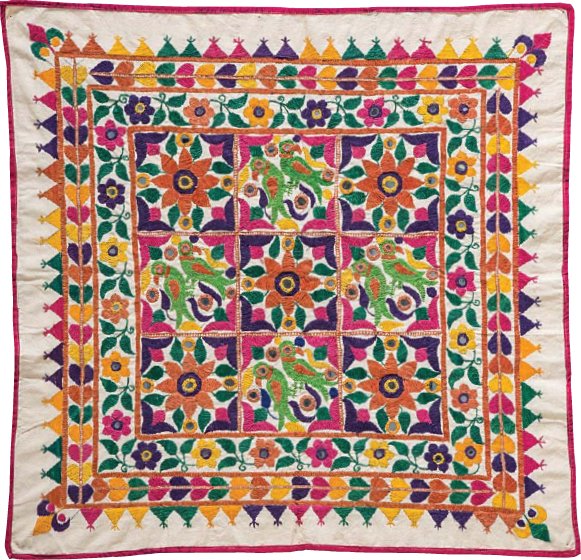 Hand-embroidered wallhanging, Gujarat, India
Hand-embroidered wallhanging, Gujarat, India 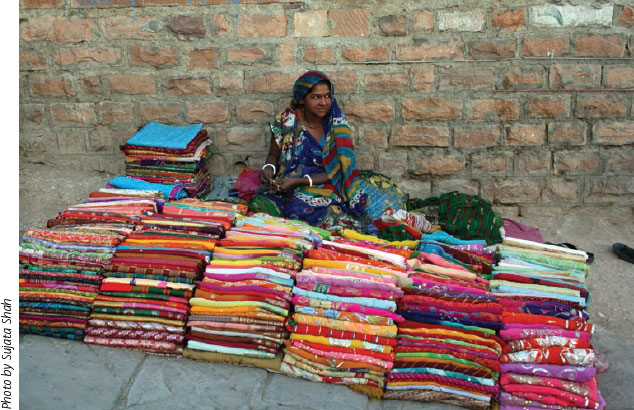 A street vendor selling saris, India I went to art school to study graphic design, where I developed an eye for patterns and textures. I drew inspirations from folk art and crafts. When I arrived in the United States in 1986 as a newlywed bride, clean lines and soft, muted gray tones greeted me at the airport. I was like a character from a color film that had walked into a black-and-white film. For a native of the tropics, I was always cold in San Francisco.
A street vendor selling saris, India I went to art school to study graphic design, where I developed an eye for patterns and textures. I drew inspirations from folk art and crafts. When I arrived in the United States in 1986 as a newlywed bride, clean lines and soft, muted gray tones greeted me at the airport. I was like a character from a color film that had walked into a black-and-white film. For a native of the tropics, I was always cold in San Francisco.
I felt clumsy wearing brightly colored Indian outfits that were halfway covered with a mismatched gray coat. In an effort to blend in, I neatly packed away my saris for occasional use and adopted the lifestyle of the West. In the early 1990s, I discovered handmade dolls at a local craft show. They reminded me of puppets from Rajasthan, India. With spare time on my hands and needing to be creative, I started making dolls. I often wondered about their purpose, but I couldnt stop making them.
It was too much fun to design their outfits and give them personalities.  Puppets made from wood and cloth, India Trips to the fabric shop led to a basic quiltmaking class. Watching quilt blocks evolve from geometric-shaped pieces of fabrics was like looking at a kaleidoscope changing patterns with every twist and turn. For the first time in my life, I was designing with fabric, sewing, and feeling good about it.
Puppets made from wood and cloth, India Trips to the fabric shop led to a basic quiltmaking class. Watching quilt blocks evolve from geometric-shaped pieces of fabrics was like looking at a kaleidoscope changing patterns with every twist and turn. For the first time in my life, I was designing with fabric, sewing, and feeling good about it.  First quilt, pieced and hand quilted by Sujata Shah, 1992 My husbands career took us to Seattle, Washington, where I would grow as a quilter. A new friend reintroduced me to quilting.
First quilt, pieced and hand quilted by Sujata Shah, 1992 My husbands career took us to Seattle, Washington, where I would grow as a quilter. A new friend reintroduced me to quilting.
Inspired by her work, I pulled out my first quilt to finish the hand quilting. Every stitch reminded me of my teen years in India and my mothers enthusiasm about embroidery and sewing. In 1998, I hand appliqud and hand quilted a bed-size quilt for my mother. It was a project we both will never forget. I was back in the world of textiles, colors, and texturesthis time with a newer canvas and a larger palette. The teenage girl who was never going to sew was not only designing quilt patterns but also teaching at a local quilt shop.
Next page
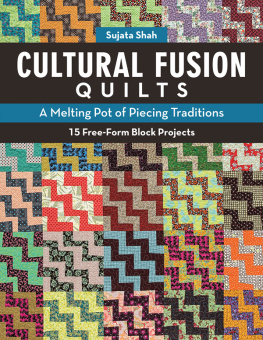




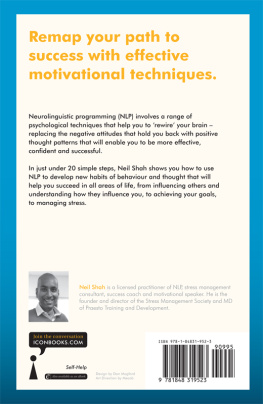
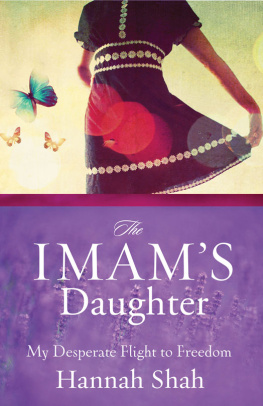
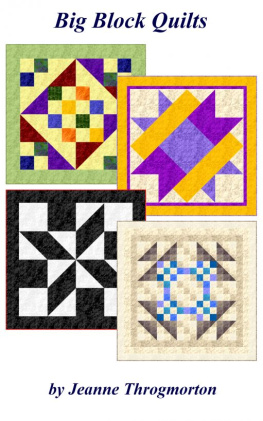
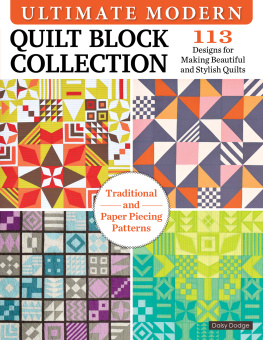
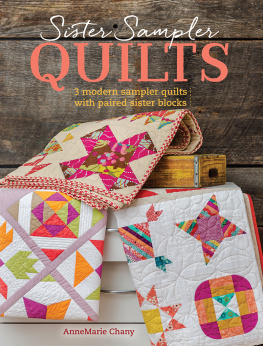
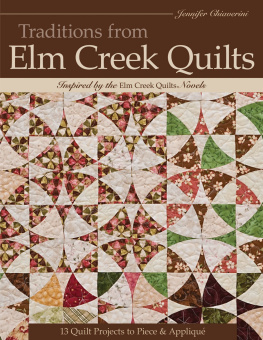
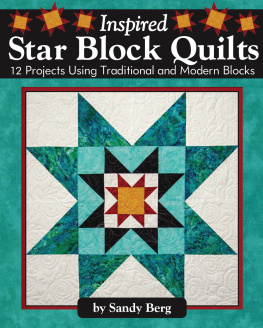

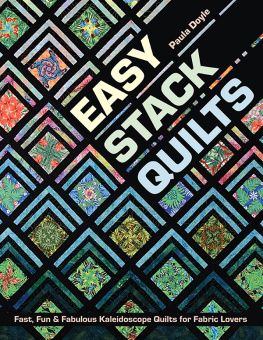

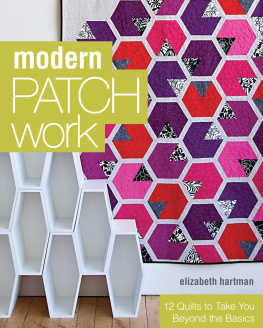
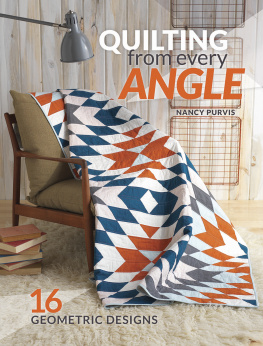
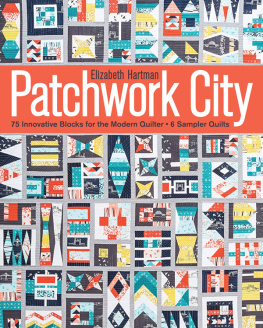
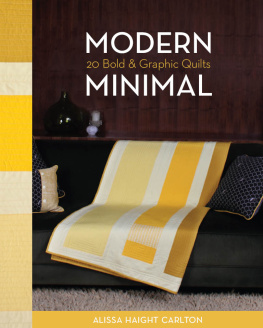
 Sujata Shah has a wonderful eye. Weve never met in person, but we have been Internet pals for several years. Somehow, through friends of friends, we wound up together in a rebellious online quilting group.
Sujata Shah has a wonderful eye. Weve never met in person, but we have been Internet pals for several years. Somehow, through friends of friends, we wound up together in a rebellious online quilting group. I grew up in India, a country well known for its textiles and colors.
I grew up in India, a country well known for its textiles and colors. Hand-embroidered wallhanging, Gujarat, India
Hand-embroidered wallhanging, Gujarat, India  A street vendor selling saris, India I went to art school to study graphic design, where I developed an eye for patterns and textures. I drew inspirations from folk art and crafts. When I arrived in the United States in 1986 as a newlywed bride, clean lines and soft, muted gray tones greeted me at the airport. I was like a character from a color film that had walked into a black-and-white film. For a native of the tropics, I was always cold in San Francisco.
A street vendor selling saris, India I went to art school to study graphic design, where I developed an eye for patterns and textures. I drew inspirations from folk art and crafts. When I arrived in the United States in 1986 as a newlywed bride, clean lines and soft, muted gray tones greeted me at the airport. I was like a character from a color film that had walked into a black-and-white film. For a native of the tropics, I was always cold in San Francisco. Puppets made from wood and cloth, India Trips to the fabric shop led to a basic quiltmaking class. Watching quilt blocks evolve from geometric-shaped pieces of fabrics was like looking at a kaleidoscope changing patterns with every twist and turn. For the first time in my life, I was designing with fabric, sewing, and feeling good about it.
Puppets made from wood and cloth, India Trips to the fabric shop led to a basic quiltmaking class. Watching quilt blocks evolve from geometric-shaped pieces of fabrics was like looking at a kaleidoscope changing patterns with every twist and turn. For the first time in my life, I was designing with fabric, sewing, and feeling good about it.  First quilt, pieced and hand quilted by Sujata Shah, 1992 My husbands career took us to Seattle, Washington, where I would grow as a quilter. A new friend reintroduced me to quilting.
First quilt, pieced and hand quilted by Sujata Shah, 1992 My husbands career took us to Seattle, Washington, where I would grow as a quilter. A new friend reintroduced me to quilting.